Domino’s Pizza (NYSE:DPZ) will announce earnings Tuesday October 8 and analysts tracked by Zacks Investment Research are expecting EPS $2.05. We have an opportunity to review data from Domino's, and its two main competitors, Papa John's (NASDAQ:PZZA) and Pizza Hut (NYSE:YUM).
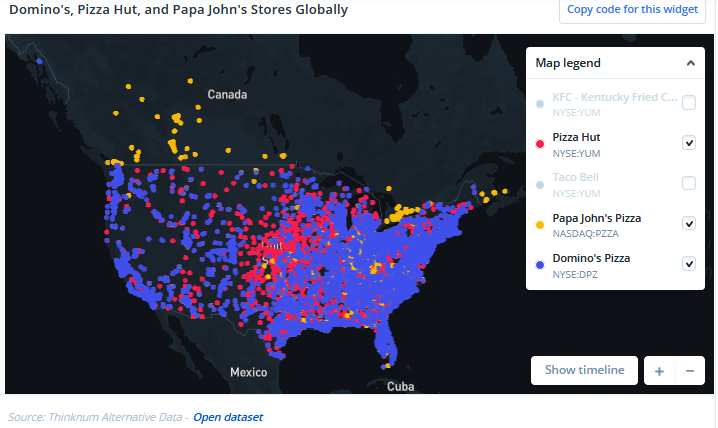
You can see how thouroughly Domino's dominates Europe, using the zoom feature on our interactive mapping tool.
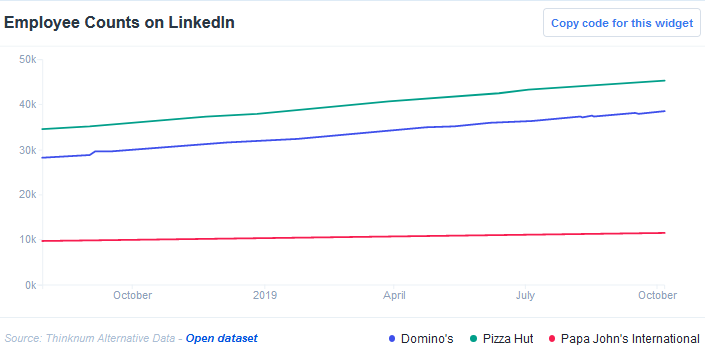
In the past 15 months, the only brand to not grow its employee count is Papa John's. Domino's saw a 36% increase in its staff size over this period of time.

Likewise, hiring has been at its highest point in months, despite it being only a 200+ increase over July's figures.
Social media

Domino's has the best growth in Twitter following over the past four years, with a 28% rise that matched a reworked campaign and rebranding effort (remember those commercials?).
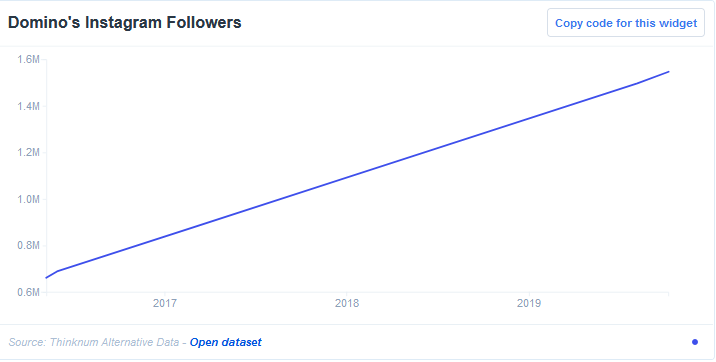
And over the last three years, Domino's Instagram game has been strong, seeing an increase of 135% in its followers. People love pizza that much, and now they can see photos of sandwiches and pasta and all the other stuff they serve now.
App store data
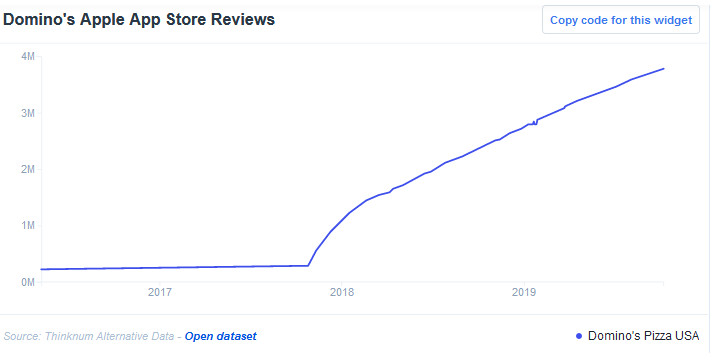
There's also been a large push by Domino's to get people to download its new app, and use its new tracker feature. The company was a first-mover on web-based delivery and has used this tactic for more than a decade to keep consumers happy, advertise new products, and keep franchisees running efficiently. You can see the point where the number of reviews took off, and impressively, the app has a solid, consistent 5-star rating on reviews.
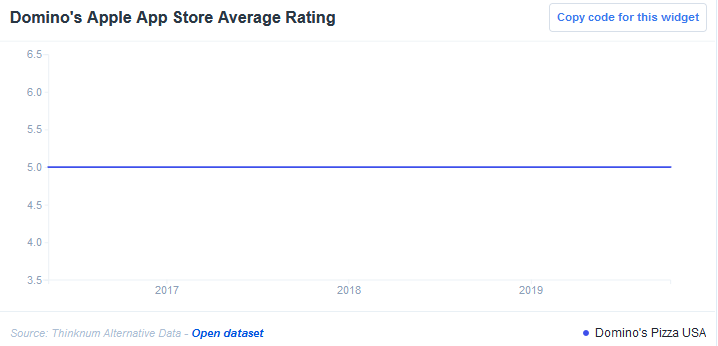
The same goes for the Google (NASDAQ:GOOGL) Play Store, and getting customers to buy into a loyalty program using an app is the best way to get a recurring revenue model going for a company who wants to take on brick-and-mortar pizzerias, as well as delivery apps such as Blaze Pizza and the robot fleet from Zume Pizza.
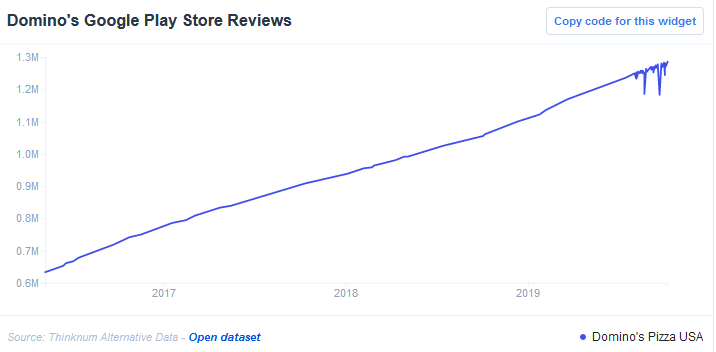
About the Data:
Thinknum tracks companies using information they post online - jobs, social and web traffic, product sales and app ratings - and creates data sets that measure factors like hiring, revenue and foot traffic. Data sets may not be fully comprehensive (they only account for what is available on the web), but they can be used to gauge performance factors like staffing and sales.
